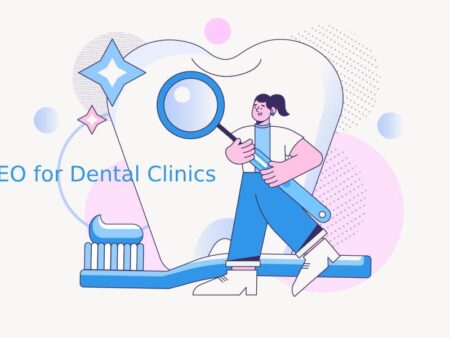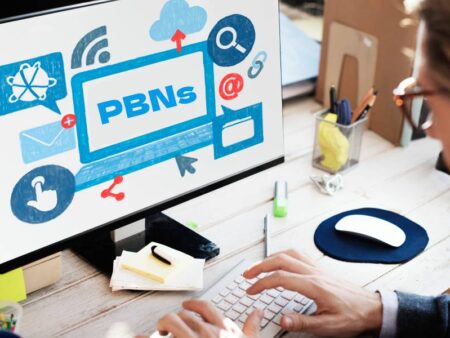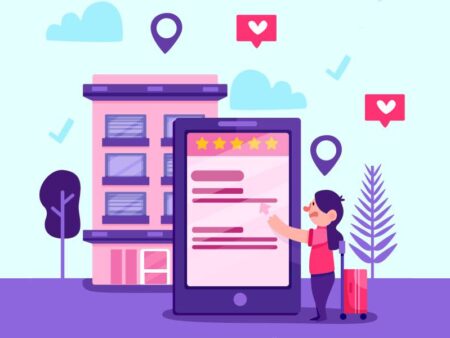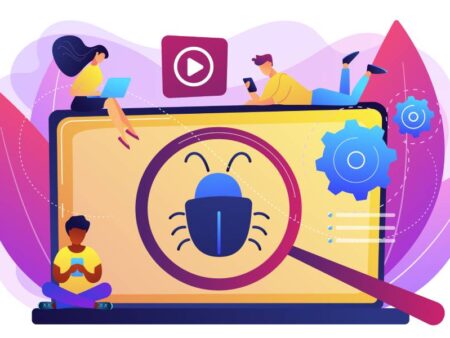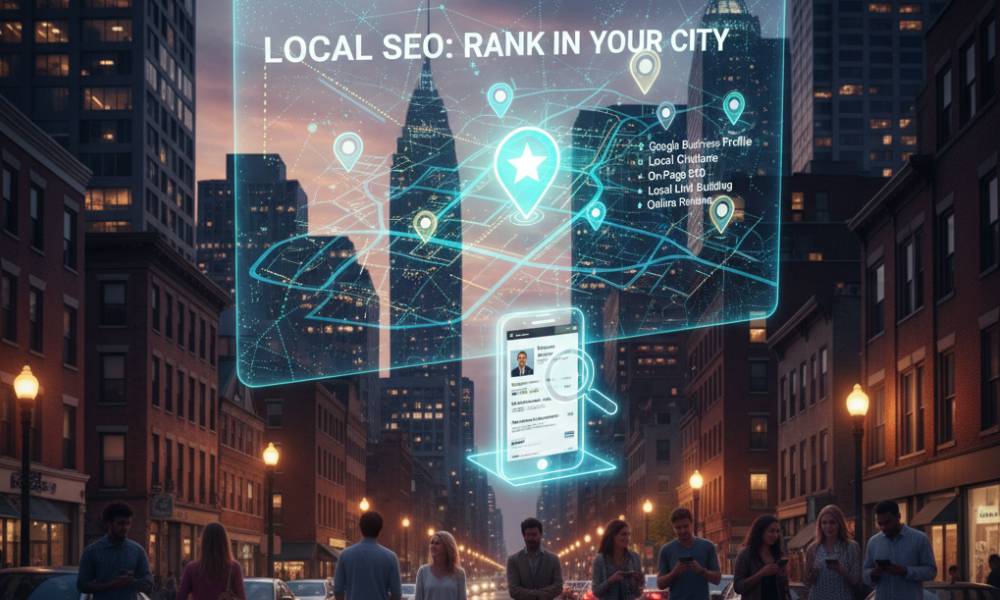
If you’ve ever searched for “best coffee shop near me” or “plumber in [your city],” you’ve already seen local SEO in action. Local SEO (Search Engine Optimization) helps businesses appear in local search results on Google and other search engines when customers nearby are looking for their products or services.
Whether you own a restaurant, dental clinic, real estate office, or cleaning company, understanding how local SEO works can make the difference between being found online and being invisible to potential customers. In this guide, we’ll explore what local SEO is, why it matters, how it works, and how you can optimize your business to dominate your city’s search results.
What Is Local SEO?
Local SEO is the process of optimizing your online presence to attract more business from relevant local searches. These are the searches that include location-based keywords (like “near me,” “in Manila,” or “best in Cebu”) or imply local intent (“restaurant open now,” “car repair,” etc.).
Google uses a combination of factors—such as proximity, relevance, and prominence—to determine which local businesses to show in its Local Pack (the map with three listings) and organic search results.
Simply put:
Local SEO helps Google understand who you are, where you are, and what you offer — so it can show your business to the right people in your area.
Why Is Local SEO Important?
Local SEO isn’t just for big companies. In fact, it’s more crucial for small and medium-sized businesses that depend on nearby customers. Here’s why it matters:
- Increased Visibility:
When users search for your services locally, appearing in the top results or Google Maps means instant exposure to ready-to-buy customers. - Mobile Search Growth:
Over 60% of Google searches come from mobile devices and most local searches happen on smartphones. Local SEO ensures your business appears exactly when customers need you. - Higher Conversion Rates:
Local searches often have strong buying intent. According to Google, 76% of people who search for something nearby visit a business within 24 hours. - Competitive Advantage:
Many small businesses neglect local SEO. Optimizing early helps you outrank competitors and secure more leads and foot traffic.
How Does Local SEO Work?
Google relies on a mix of local ranking signals to determine where your business should appear. These include:
- Google Business Profile (GBP) signals (relevance, proximity, activity)
- On-page SEO (optimized title tags, local keywords, schema)
- Reviews and ratings (quantity, quality, and freshness)
- Citations (your business name, address, and phone number consistency)
- Behavioral signals (clicks, calls, direction requests)
- Backlinks from local websites
Understanding these signals is the first step to improving your local ranking.
Core Elements of Local SEO Optimization
1. Google Business Profile Optimization
Your Google Business Profile (GBP), formerly known as Google My Business, is the foundation of local SEO.
Here’s how to optimize it effectively:
- Claim and verify your profile at google.com/business
- Use your accurate business name, address, and phone number (NAP)
- Add high-quality photos of your store, products, and team
- Choose the correct categories and attributes
- Write a detailed business description with your target local keywords
- Post updates, offers, and events regularly
- Collect and respond to Google reviews
An optimized Google Business Profile improves your visibility in Google Maps and the Local 3-Pack.
2. Local Keyword Research
Local keyword research helps you identify what people in your area are actually searching for.
Use tools like Google Keyword Planner, Ahrefs, or Ubersuggest to find phrases such as:
- “Best digital marketing agency in Davao”
- “Affordable cleaning service near me”
- “Dentist in Makati open now”
Focus on geo-targeted keywords (city, region, or neighborhood) and incorporate them naturally into your website content, headings, meta titles, and descriptions.
3. On-Page SEO for Local Relevance
Optimize your website pages with local intent by:
- Including your city or region name in title tags and headings
- Adding your business address and Google Map embed on your contact page
- Writing location-specific content (e.g., “Top 5 Roofing Tips for Homeowners in Quezon City”)
- Using local business schema markup to help Google read your NAP info properly
Pro Tip: Create individual service area pages if your business serves multiple cities.
4. Local Citations & Directories
Citations are mentions of your business name, address, and phone number on other websites like online directories, social media, or local listings.
To strengthen your local presence, list your business on:
- Google Business Profile
- Bing Places
- Yelp
- Facebook
- Yellow Pages
- Foursquare
- Local chamber of commerce or city directories
Ensure your NAP information is consistent across all platforms. Inconsistent details can confuse both users and search engines.
5. Online Reviews and Reputation Management
Customer reviews are a major trust signal for Google and potential clients. Encourage your happy customers to leave reviews on Google and other platforms.
Tips for managing reviews:
- Always reply to reviews (positive or negative)
- Use keywords naturally in your responses
- Avoid fake or incentivized reviews — authenticity matters
The more positive, recent reviews you have, the better your local SEO ranking will be.
6. Local Backlinks and Partnerships
Building local backlinks (links from websites in your region) can boost your authority.
Here’s how:
- Partner with local bloggers or influencers
- Sponsor community events
- Join local business associations
- Publish press releases for local news outlets
High-quality local backlinks tell Google that your business is trusted within your community.
7. Mobile Optimization
Since most local searches come from mobile users, ensure your website is:
- Fast-loading (under 3 seconds)
- Mobile-friendly (responsive design)
- Easy to navigate (clear menus, clickable phone numbers)
A smooth mobile experience increases engagement, which directly supports your local rankings.
8. Local Content Marketing
Create locally relevant content that connects with your community. Examples include:
- “Best Things to Do in [City] This Weekend”
- “Our Favorite Local Suppliers in [Region]”
- “How Our [City] Customers Are Using Our Services”
This builds brand awareness and encourages local backlinks and shares.
Tracking and Measuring Local SEO Success
To know whether your local SEO efforts are working, monitor key metrics using:
- Google Business Profile Insights – track calls, directions, and views
- Google Analytics 4 (GA4) – measure local traffic and conversions
- Google Search Console – check keyword performance and click-through rates
Regularly review your data and adjust your strategies to improve performance.
What is the Best Local SEO Training in the Philippines?
In today’s digital era, visibility on search engines can make or break a business. That’s why WSP (WordPress SEO Training PH) stands out as the best local SEO training provider in the Philippines, empowering entrepreneurs, freelancers, and marketing professionals to master local search optimization with real-world strategies that drive results.
WSP’s Local SEO Training Program goes beyond theory; it focuses on actionable, data-driven techniques to help businesses rank higher on Google Maps, Google Business Profile (GBP), and local search results. Whether you’re managing a small business or handling multiple client accounts, WSP teaches you how to optimize for geo-targeted keywords, boost online visibility, and attract customers within your specific location.
What makes WSP’s SEO training unique is its hands-on learning approach. Participants learn how to perform local keyword research, optimize NAP (Name, Address, Phone) consistency, build local citations, and earn powerful backlinks from relevant sources. You’ll also discover how to use Google Analytics, Search Console, and local ranking tools to track performance and refine SEO strategies.
With expert-led modules and personalized mentoring, WSP ensures every learner gains practical skills in on-page optimization, technical SEO, content strategy, and local reputation management. This combination of expertise and support makes it ideal for business owners, digital marketers, and SEO beginners aiming to dominate their local market.
If you want to rank higher, get more local leads, and build a trusted brand presence online, WSP’s Local SEO Training in the Philippines is the best investment you can make. Learn from industry professionals and start optimizing your business for local success today.
Final Thoughts
Local SEO is one of the most powerful ways for small and medium-sized businesses to attract nearby customers, build trust, and compete with bigger brands.
By optimizing your Google Business Profile, targeting local keywords, building citations, earning reviews, and publishing local content, you can dominate your city’s search rankings and increase both online and offline traffic.
Remember: Local SEO isn’t a one-time setup it’s an ongoing process of building visibility, credibility, and relationships within your community.
Start today, and let your city find you first.
What Are You Waiting, Enroll Now!
Contact Us!Subscribe to this Page
Average rating 5 / 5. Vote count: 103
Share on Social Media


